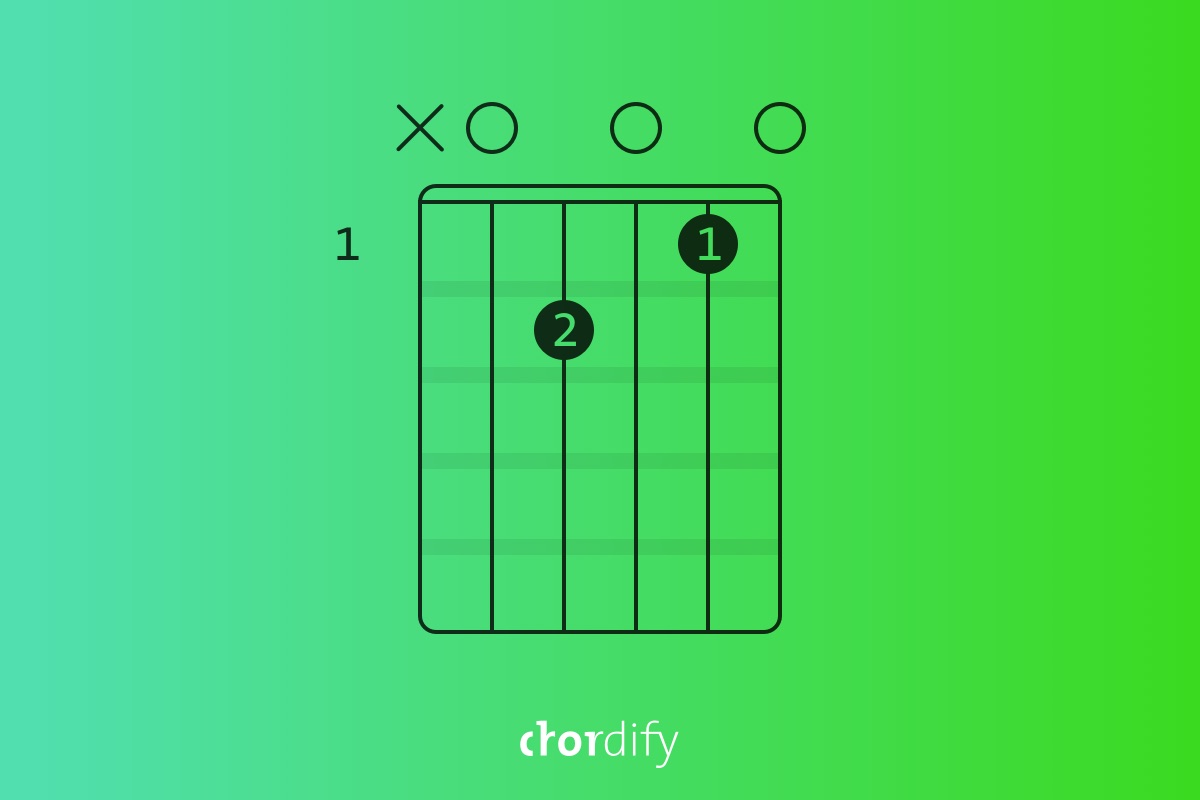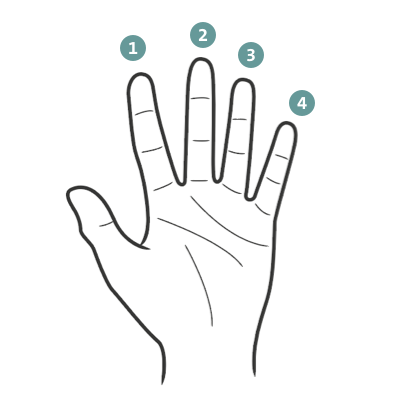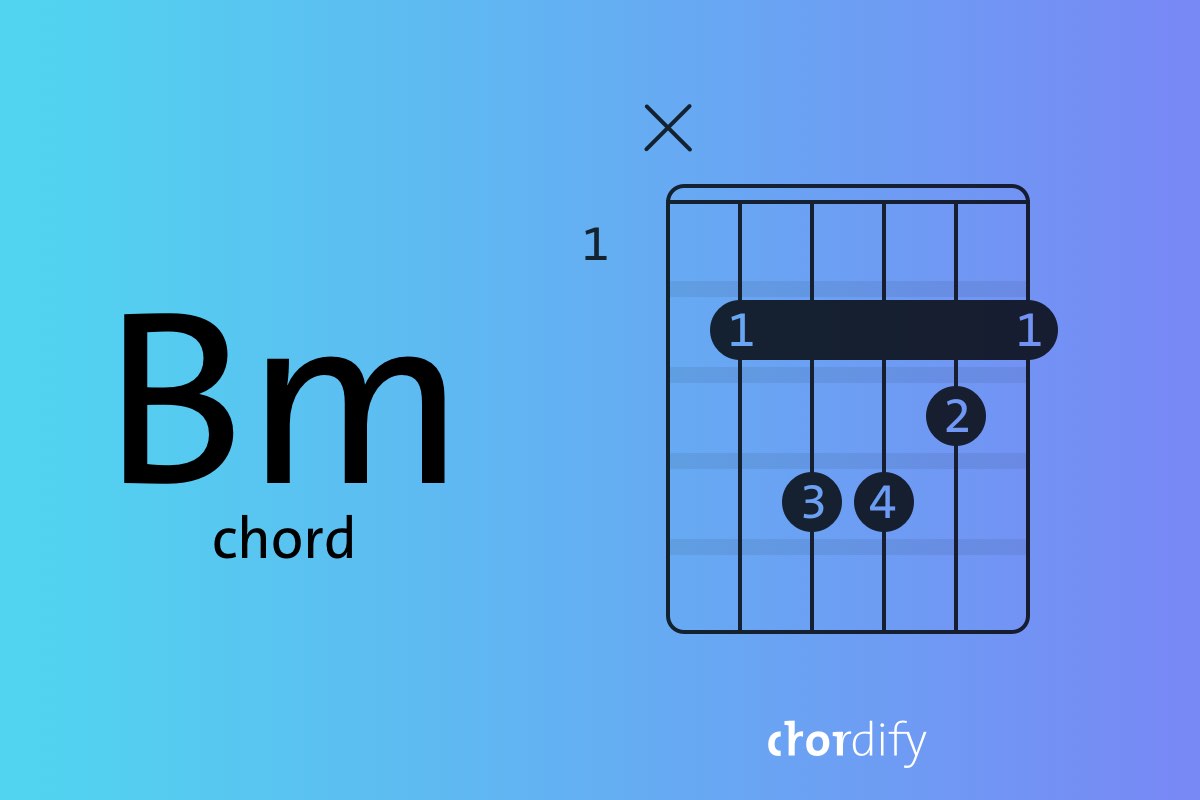After discussing all the basic triads, the time has come to dive deeper into the chord abyss. In this blog post we’re going to cover how to play an Am7 chord on guitar. Like all the basic chords this one is located at the top of the guitar neck. Are you ready?
Estimated reading time: 5 minutes
In this blog about the Am7 chord
Introduction
In basic triads we only have three different notes, even if we sometimes play five or six strings at the same time. What if we told you this could be used to our advantage, making the chord we already know – the Am chord – a little more interesting by adding an extra note to it like the seventh. How? Let’s check it out!
Step 1 – Tune your guitar
But before we go ahead and tell you all the juicy stuff, it’s important to grab your guitar and tune it in standard tuning. Check out our blog post on tips & tricks for tuning your guitar. No time to read? Alrighty, then use a regular tuning device for this, like an analog tuner, or an application like KARANG.
Step 2 – Take a look at the Am7 chord diagram
Let’s have a quick look at the Am7 chord diagram in the image below. The vertical lines are the strings. From left to right, you first see the low E and on the right is your high e. But strings are counted from high e (first) to low E (sixth). Claro? Si? Okay!

The horizontal lines in the chord diagram are the frets. The number in the upper left-hand corner of the diagram shows you which fret is the first in the picture. In this case it’s the first fret. Knowing that, allows you to calculate where you have to place your fingers.
Step 3 – Strumming the Am7 chord
Talking about fingers, check out the picture below. As you can see, we’ve numbered them: index finger one, middle finger two, ring finger three and pinky four. With that in mind, check out the dark circles with the numbering positioned on the strings of the Am7 chord diagram. This shows you your finger placement.

Do you remember how to play the Am chord? Great! Now, position your fingers in the Am figure on the fretboard. This is where the fun starts! Let’s add one extra note to this chord by opening the G string (third string). Yes, that means you’ll have to lift your ring finger. By doing so there are only two fingers at work: your index finger pressing the third string on the first fret and your middle finger pressing fourth string on second fret.
Here’s a simple rule: the letter of this chord is an A, right? If you wonder which strings you should strum, just remember to start from the fifth string. Why? Simply because it’s the string which has the same name as the chord you’re playing, the A string. All fingers in place? Now give the chord a good ring will ya!
Step 4 – (Bonus) Why do we call this chord an Am7?
Congratulations, you just added a new chord to your skill set. You know what that means right? Oh yeah, now you can jam the chords of Oasis’ “Live Forever” and be certain that you’re hitting all the right strings – when it comes to the Am7 that is of course.
If you want to start jamming, be our guest! But if you’re up for some mind-blowing musical theory, buckle up. And since you’re still reading, here are some facts. Each basic chord we discuss consists of a number of basic elements: the root note, the third note (third), the fifth note (fifth).
Step 4a – The music theory bonus continues
These numbers refer to the scale that belongs to the chord: A (root), B, C (third), D, E (fifth), F, G (!) and A. Do you remember the fancy trick we played on the good old Am chord in the beginning? Right, we opened up the 3rd string, the G. Let’s take a closer look at the position of G in the A scale? A, B, C, D … G. Right, it’s the seventh note. You see? That’s why we call this chord Am7. Because you add the seventh note to the chord.
Now take another look at the Am7 chord diagram. Which notes do you actually use from the scale? You strum an A, an E, a G and a C – so root, fifth, seventh and third. Makes sense, right? See our blog post on more complex chord constructions. This info probably made your head spin. Take a deep breath, forget everything you read for the last two minutes and go back to jamming Oasis chords. Happy jamming!


